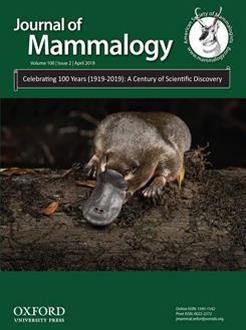Studies determining and categorizing ultrasonic calls in mammals have generally been limited to laboratory experiments with mice and rats or field research on bats. However, recent studies have discovered high-frequency sounds in several mammalian taxa. We describe the vocal repertoire of high-frequency calls in two species of North American flying squirrels (Glaucomys sabrinus and G. volans). We collected passive recordings from captive colonies of G. sabrinus and G. volans to generate a library of calls for each species. Using visual and auditory assessments, as well as quantitative measurements (i.e., spectral and temporal characteristics), we identified 10 specific call-types for G. sabrinus and 27 specific call-types for G. volans. The most common call-types emitted by G. sabrinus included arc chirps, tonal chirps, two-toned chirps, trills, and upsweeps; and for G. volans included arc chirps, barks, descending crows, tonal chirps, and trills. Additionally, we recorded two call-types made by G. volans juveniles: trills and tonal chirps. Most call-types emitted by G. sabrinus were also emitted by G. volans, showing overlap in the repertoire of both species, although variation between species is evident in certain call-types. We also found both species displayed evidence of frequency alteration (i.e., modification of the frequency of one squirrel's call when simultaneously calling with another squirrel using similar call-types). Our call library demonstrates a complex vocal range of tonal and frequency-modulated calls emitted by both species. Acoustic detection of North American flying squirrels is a new monitoring technique that can be used for conservation and management purposes. Differences in the trills, tonal chirps, and arc chirps provide a means to distinguish calls between these species. Increasing understanding of behavior associated with vocalizations may provide a more complete understanding of flying squirrel ecology, including intra- and interspecific interactions.
How to translate text using browser tools
6 April 2019
Vocal repertoire of captive northern and southern flying squirrels (Glaucomys sabrinus and G. volans)
L. Michelle Gilley,
Corinne A. Diggins,
Scott M. Pearson,
Troy L. Best
ACCESS THE FULL ARTICLE

Journal of Mammalogy
Vol. 100 • No. 2
April 2019
Vol. 100 • No. 2
April 2019
bioacoustics
call repertoire
flying squirrel
Glaucomys sabrinus
Glaucomys volans
ultrasonic vocalizations




